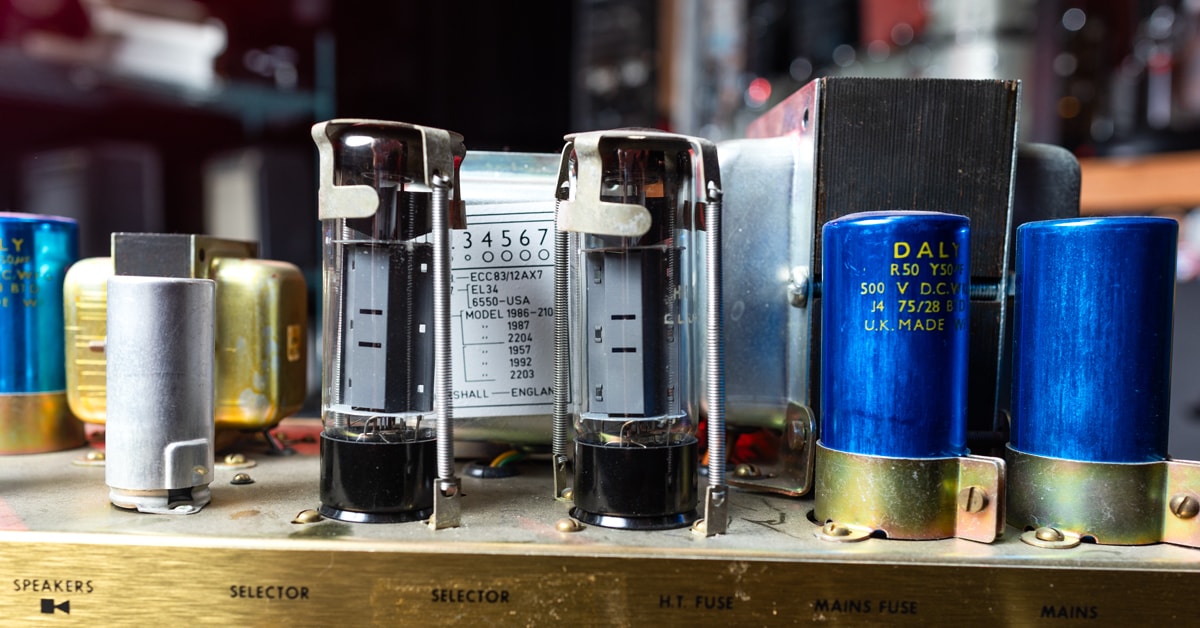So, you think your electric guitar is the big cheese of an amplified signal chain? Think again. Whatever lovely tonewoods and fancy electronics your guitar may have, the signal produced by your pickups is puny and anemic.
It must be boosted up from instrument level by the preamp section of your amp so that it can drive the power tubes that ultimately produce the output—the sound and fury that every guitarist adores.
Different types of power tubes also possess both common and individual traits, and anyone looking to get the most out of their amps, emulate the sounds of their musical heroes or attempt to forge totally original, idiosyncratic textures should know how each of these glowing glass bottles affect tone.
Science is involved, and a few Google searches, such as “How Tube Amps Work,” can send you far into the tall weeds of technical study.
Let’s not go there.
Instead, let’s discuss—in simple terms—the real-world impact of a specific output tube on your sound. Once you have a handle on the basic qualities of the common power tubes available today, you’ll be able to determine which tube types—and therefore, which amps—might be best for enhancing your creativity and inspiring forays into tone building.
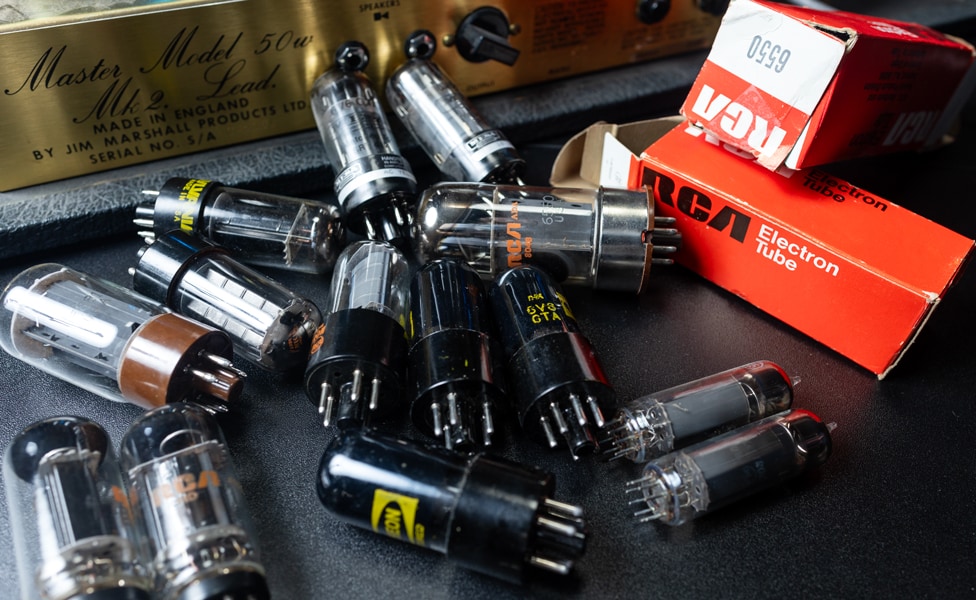
Pictured: Assorted Power Tubes
Table of Contents
Common Power Tubes
Quick Power Tube Comparison Chart
Power Tube Characteristics
6550
6L6
6V6
EL34
EL84
KT66
KT88
Tubular Spells
Common Power Tubes
While some boutique designers may choose arcane or esoteric tubes to produce unique sounds, most current amp manufacturers work with just four major varieties—6L6, 6V6, EL34 and EL84. Occasionally, an amp maker will create a model utilizing less common tubes, such as 6550, KT66 or KT88 types.
All of these tubes were originally developed from the 1930s to the 1950s—by manufacturers such as RCA, GE, Amperex, Sylvania and Mullard—and were initially made to power radios, hi-fi systems, televisions, military gear and more. Happily, what power tubes needed to do in order to produce excellent sound for a hi-fi was also applicable to guitar amps.
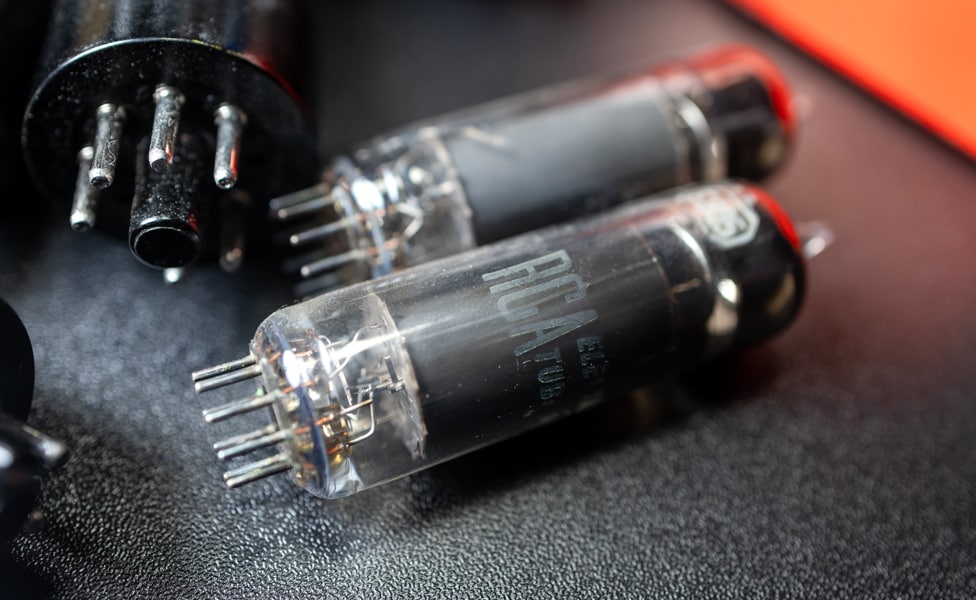
Pictured: RCA 6BQ5 (EL84) Power Tubes
Quick Power Tube Comparison Chart
Please see the chart below for some quick comparisons, and read on for more information on power-tube tone and development.
|
Tube |
Debut |
Maximum Wattage |
Sonic Quality |
Associated Amps |
|
6550 |
1955 |
42 |
Clean with lots of headroom. |
Marshall JMP/JCM*, Ampeg SVT bass amps. |
|
6L6 |
1936 |
30 |
Clean headroom. Warm, smooth overdrive. |
Fender Twin Reverb, Fender Dual Showman. |
|
6V6 |
1936 |
14 |
Balanced clean tone with restrained mids. Rich overdrive. |
Fender Champ, Fender Princeton, Fender tweed Deluxe, Gibson GA-40. |
|
EL34 |
1949 |
25 |
Warm mids, aggressive highs. Lush grind. |
Marshall DSL40CR, Orange, Hiwatt, MESA/Boogie Stiletto. |
|
EL84 |
1953 |
12 |
Shimmering, chimey cleans. Feral, growling overdrive. |
|
|
KT66 |
1937 |
25 |
Bold, open tone. Smooth midrange. |
’60s Marshall JTM45, Dr. Z Route 66. |
|
KT88 |
1956 |
42 |
Massive clean headroom with clarity and definition. |
Marshall Major and high-power Hiwatt and Ampeg amps. |
*'70s/'80s, U.S. imported models.
Power Tube Characteristics
Now, let’s take a straightforward but essential examination of common power tubes. We’ll describe how each type can affect guitar tone, so you can zero in on why a particular output tube may be just the one for you and your music.
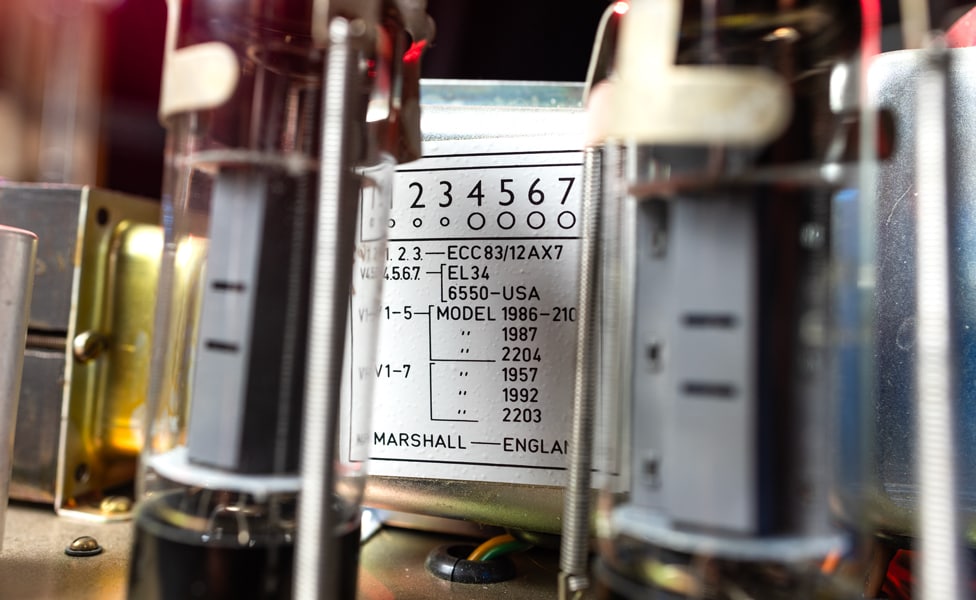
Pictured: Tube Chart on a vintage Marshall Master Model MKII Lead 2204 Amplifier
6550
Originally developed to provide more output and less distortion for hi-fi aficionados in the 1950s, the 6550 power tube is a brute with tons of clean headroom and an almost pugnacious resistance to dirty sounds. Considering that description, it would seem unlikely that some grind-friendly Marshall JMP and JCM800 amps were powered by 6550 tubes in the ’70s and ’80s, but it’s true. (Marshall’s U.S. distributor apparently felt 6550s—rather than the previous EL34 standard—were more reliable at the time.) Although the 6550 is often used for clean and powerful guitar amps, perhaps its main reputation is providing bassists the pristine warm and fat tones found in Ampeg SVT bass amps.
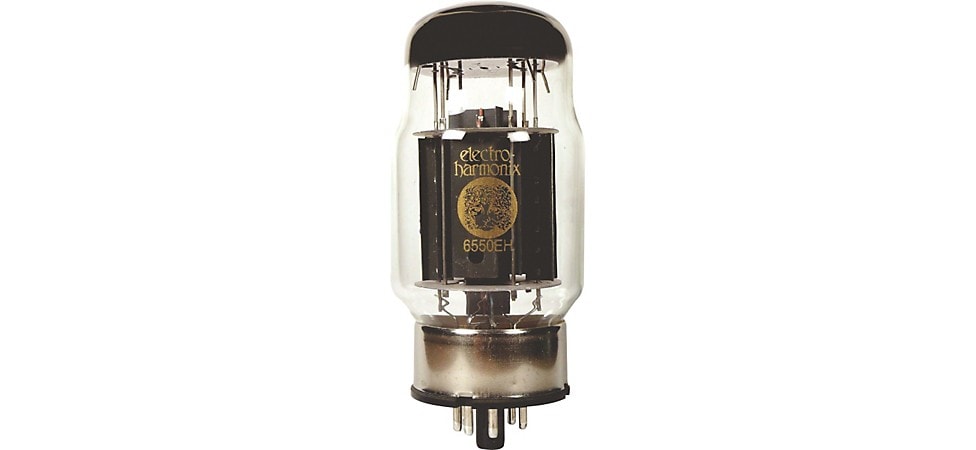
Pictured: Electro-Harmonix 6550 Matched Power Tubes
The 6550 Sound: Clean. Clean. Clean. Often described as “glassy” with nice punch, slightly gritty mids, big and round bass frequencies and glossy highs.
Killer App: Excellent tube for those who rely on pedals, modeling processors or multi-effects boards to get their sound, because the relatively unsullied tone of the 6550 will translate the natural colors of those devices.
Check Out 6550 Tubes: Electro-Harmonix 6650 Matched Power Tubes Medium Sextet, Tung-Sol 6550 Tube Medium Green Duet.
6L6
The 6L6 can be somewhat gloriously portrayed as the “Sound of American Rock”—mostly due to Fender using it for iconic guitar amps, such as the Bassman, Dual Showman and Twin Reverb. Like the 6550, the 6L6 is a high-powered tube with excellent clean headroom. As a result, the 6L6 doesn’t break up too quickly, but when it does, the overdrive is gorgeously smooth, supple, organic and balanced. While many early rockers gravitated to Fender amps, the 6L6 sound was perhaps most celebrated by Dick Dale and his incredibly loud Fender Showman as he “invented” surf guitar at Southern California’s Rendezvous Ballroom in 1961. (Leo Fender famously stated about developing a high-wattage amp, “When it can withstand the barrage of punishment from Dick Dale, then it is fit for the human consumption.”)
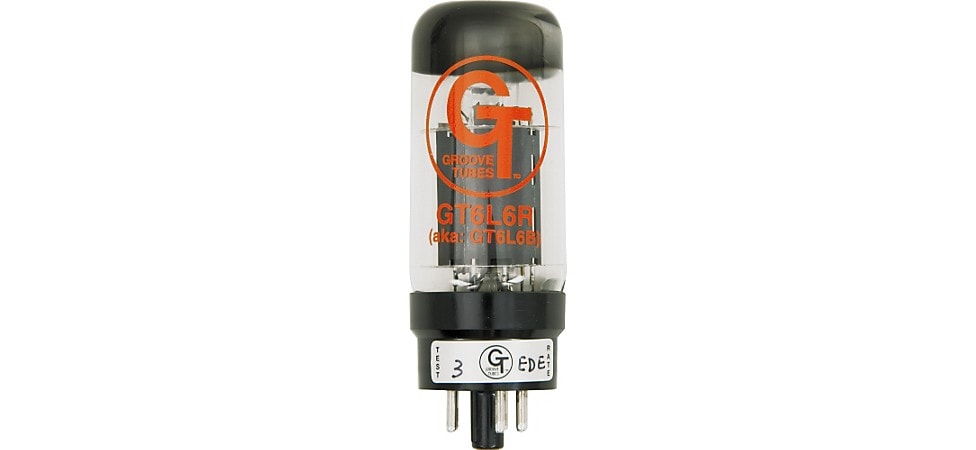
Pictured: Groove Tubes Gold Series GT-6L6-R Matched Power Tubes
The 6L6 Sound: Relatively balanced across the frequency spectrum, possessing taut lows, coherent mids and crystalline highs.
Killer App: It’s kind of a best-of-two-worlds situation. Like the 6550, the clean headroom of the 6L6 means that any amp using it will be a great choice as a pedalboard platform. But you also get that beautiful overdrive sound when you want to switch to an organic amp tone.
Check Out 6L6 Tubes: Groove Tubes Gold Series GT-6L6-R Matched Power Tubes Medium Duet, MESA/Boogie 6L6 GC STR 441 Power Tubes Matched Duet, Ruby 6L6GCCZ Matched Amp Tubes Pair, Tung-Sol 6L6GC STR Matched Power Tubes Hard Quartet.
6V6
Sometimes called the little sibling of the 6L6—due to its lower output rating of 14 watts—the 6V6 nonetheless shares some sonic similarities with its higher-wattage family member. The 6V6 can deliver the magnificent clean tones coveted by 6L6 fanatics—albeit at lower volumes than a 6L6-equipped amp—but it also has a dark, “werewolf during a full moon” side. When you crank up a 6V6 amp, the overdrive sound gets absolutely ferocious. Fender initially used the 6V6 for its so-called “student” amps—such as the Champ and Princeton—perhaps unaware (at the time) that rockers looking for mad distortion would use the little amps for crafting aggressive and savage tones, rather than low-volume practice sessions.
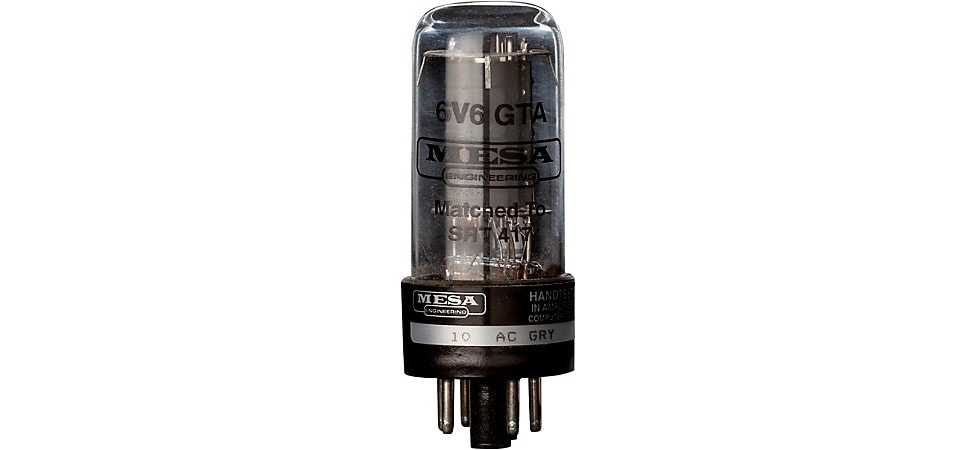
Pictured: MESA/Boogie 6V6 STR 417 Matched Power Tubes
The 6V6 Sound: Warm, sweet and balanced clean tones. Compared to the 6L6, the 6V6 produces a tighter bass response with a bit less shimmer on the high end. The 6V6 is perhaps more prized for its natural compression and raging overdrive when pushed.
Killer App: Due to its lower power that can easily be pushed to distortion, 6V6-equipped amps are fantastic for recording. Classic 6V6 recordings include “Layla” by Derek and the Dominos (Eric Clapton and Fender Champ), “King Charlemagne” by Steely Dan (Larry Carlton and 5E3 tweed Fender Deluxe) and “Sweet Dreams” by Roy Buchanan (Fender Deluxe Reverb).
Check Out 6V6 Tubes: Groove Tubes Gold Series GT-6V6-R Matched Medium Duet, MESA/Boogie 6V6S GTA STR 417 Matched Duet, Ruby 6V6 Matched Quad, Tung-Sol 6V6GT Matched Hard Duet.
EL34
Much like the 6L6 represents classic American tube tone, the EL34 stands strong as the monarch of British amplification. The EL34 is the brawling engine used for iconic models by fire-breathing amp brands such as Marshall (Lead 50, Super Lead), Hiwatt (Custom 100, Custom 50) and Orange (OR100, GRO100). It produces the sound that propelled the genius of guitarists, such as Jimi Hendrix, Jimmy Page, Eddie Van Halen, Angus Young, Pete Townshend, Lita Ford, Nita Strauss and others. Although EL34-powered amps are capable of dynamics and subtlety, few players plug into a Marshall to comp delicately behind children’s nursery rhymes. This is the tube that roars.
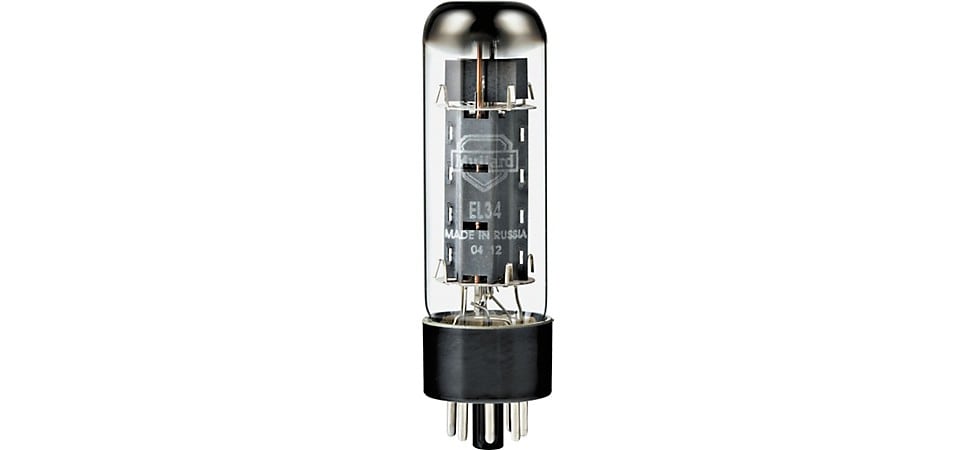
Pictured: Mullard EL34 Power Tube Medium Green Quartet
The EL34 Sound: Fiery yet rich and complex crunch. Capable of sizzling or warm midrange frequencies, depending on how you set the amp’s tone controls, as well as how hard you hit the front end of the amplifier. Lows can be slight, and highs are typically crispy, but that’s the sound of the in-your-face grind most players want.
Killer App: Unleashing organic, sonic savagery without the need for distortion, fuzz and overdrive pedals. Simply crank it and rage like a rock star.
Check Out EL34 Tubes: Electro-Harmonix EL34 Matched Medium Quartet, MESA/Boogie EL34 STR 447 Matched Duet, Mullard EL34 Medium Green Quartet, Ruby EL34CZ Matched Quad, Svetlana EL34 Matched Blue Duet, Wathen CryoTone EL34-WC.
EL84
The power behind the VOX AC30 and AC15, the EL84 was on the front lines for the first musical British Invasion launched by Beatlemania. It also fueled Brian May’s famed “no synthesizers” textures with Queen in the 1970s, fired up Rory Gallagher’s battered Stratocaster fusillades, informed the sound of U2’s residency at the Las Vegas Sphere and continues to inspire new-generation guitarists, such as Elise Trouw, Hozier and Yvette Young. The EL84 is a low-output power tube that breaks up easily, producing stunning, naturally compressed saturation.
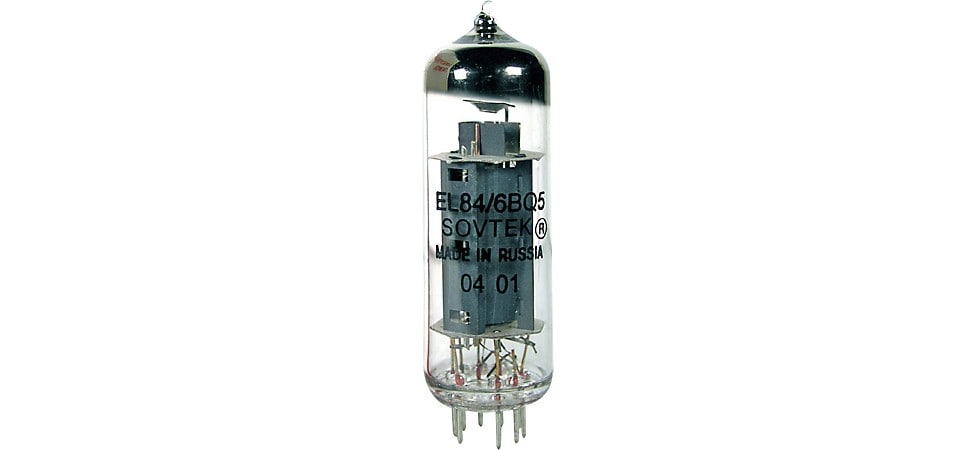
Pictured: SOVTEK EL84 Matched Power Tubes
The EL84 Sound: The British sound in a bottle. The very definition of “chime.” The EL84 is bright but not thin—thanks to its chunky bass, punchy mids and glistening highs. Both clean and overdriven tones have an indelible essence of vibe and attitude.
Killer App: Because EL84 output tubes deliver clean tones that can rapidly soar into overdrive, players can negotiate sounds from shimmer to crunch to outright distortion by merely turning their guitar’s volume knob up and down (and back).
Check Out EL84 Tubes: Electro-Harmonix EL84 Matched Hard Duet, MESA/Boogie EL84 6BQ5 Matched Duet, Ruby EL84CZ Premium Matched Quad, Sovtek EL84 Matched Medium Duet, Wathen CryoTone EL84-WC.
KT66
Here’s where we get a bit into the “disparity depth” of the tube pool. The KT66 was originally manufactured in England as a response to America’s 6L6. The tonal differences between the KT66 and 6L6 are considered slight by some, and significant by others. If you want to explore the sounds yourself, be sure to contact a qualified tech before changing out the 6L6s in an amp with KT66s—even though the two are often considered interchangeable. (The KT66 draws more current than the 6L6 and its larger “bottle” sometimes doesn’t fit easily into a 6L6 amp.) The KT66 most notably showed up in some ’60s Marshall amps, and legend has it that Eric Clapton performed his epoch-making version of “Hideaway” (Blues Breakers with Eric Clapton, 1966) with a Marshall 1962 JTM45 combo loaded with KT66s.
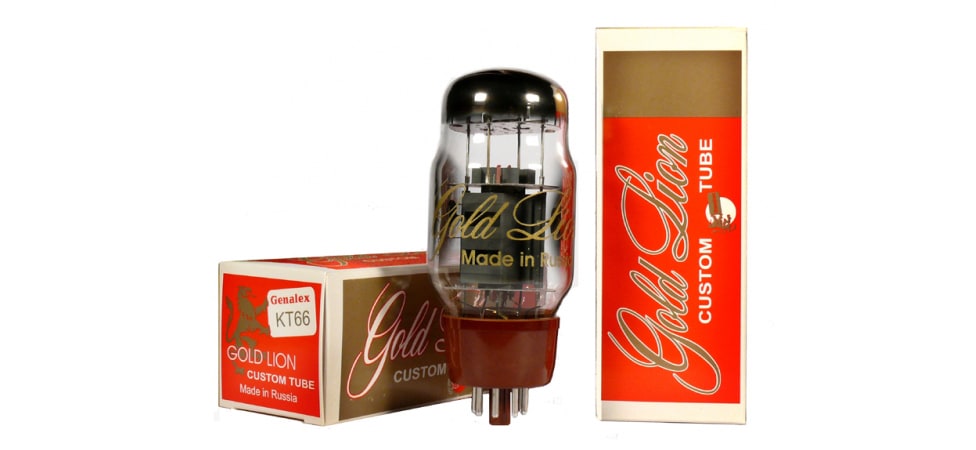
Pictured: Genalex Gold Lion KT66 Power Tube
The KT66 Sound: Those in the “KT66 sounds different” camp maintain the KT66 produces a more open, dynamic, bold and uncompressed tone with silkier mids than the 6L6.
Killer App: If you support the notion that there is a notable difference between the British and American varieties, you may be able to get a bigger, bolder sound out of your 6L6-equipped amp by changing the output tubes to KT66s.
KT88
It’s probably not going to surprise you at this point that America’s 6550 output tube also has a doppelganger in Britain’s KT88. It appears that, unlike some of the considerations with swapping a KT66 for a 6L6 (and vice versa), KT88s can be easily interchanged with 6550s. (We still recommend checking with a knowledgeable amp tech before trying the switcheroo yourself.) Just like the KT66 situation, however, it appears the British “one-upped” the American tube by providing a more robust and refined sound. The KT88 is also considered to be one of the finest output tubes available for upscale hi-fi amplifiers. Four KT88s were used in the over-the-top, 200W Marshall Major amp of 1967. Mick Ronson—David Bowie’s guitarist during the Spiders from Mars era (1970–1973)—famously called his Marshall Major “The Pig.” One can only imagine the sheer volume produced by those overdriven KT88s.

Pictured: Electro-Harmonix KT88 Platinum Matched Power Tubes
The KT88 Sound: Compared to a 6550, the KT88 serves up a bigger, cleaner tone with expansive lows, clear and defined highs and nicely restrained midrange frequencies (no “barking” or painful scorch). Distortion is pretty much not invited to the tone party. This is a tube that delivers extreme clarity, focus and articulation.
Killer App: Looking for the ultimate in clean headroom? A KT88-equipped amp can practically ensure your guitar and/or pedals are translated with minimal timbral coloration.
Tubular Spells
At this point, if you feel EL84s may provide the perfect soundtrack to your music, style and technique, you can cut loose and audition amps that use EL84s in their power sections.
If you’re a bit more daring in a DIY sense, you now have the basic knowledge required to replace the power tubes in an amp that isn’t quite doing it for you, with tubes that provide everything you want. However, there are some important caveats to tube swapping …
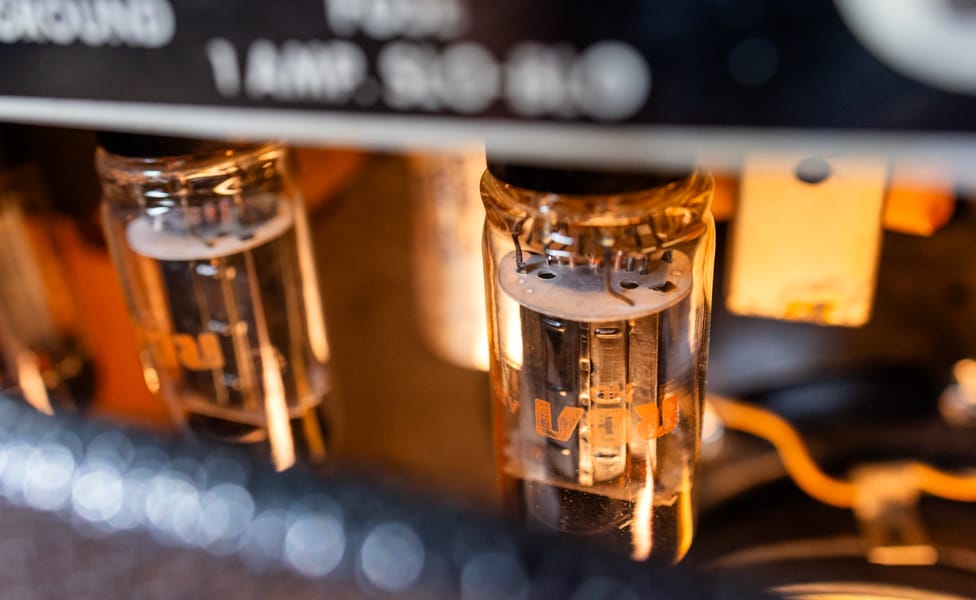
Pictured: RCA power tubes in a vintage Fender Princeton
• Tube amps harbor murderous voltages. Take heed—it’s true. Even if an amp is unplugged from a power source, its capacitors can store dangerous voltages. Don’t stick your hands inside an amp and start pulling out tubes without first seeing a qualified amp tech and taking their counsel.
• New tubes typically need to settle in. New power tubes usually don’t sound as awesome as they ultimately will until they are “played in” for 40 to 80 hours. Don’t get disappointed if you change tubes and the immediate result is less than striking. Be patient. Give the new tubes some time to warm up, wear in and deliver their best sound.
• Your tubes will likely need biasing. Even if a new power tube is described as a direct replacement for another power tube, it doesn’t mean you can simply swap out the bottles and nirvana will be attained. Many amps need to have the tubes biased before they can deliver optimum sound and performance. Biasing simply means ensuring the power tubes are receiving the correct voltage according to their resistance. Again, unless you have the experience, find a professional tech to bias your amp.
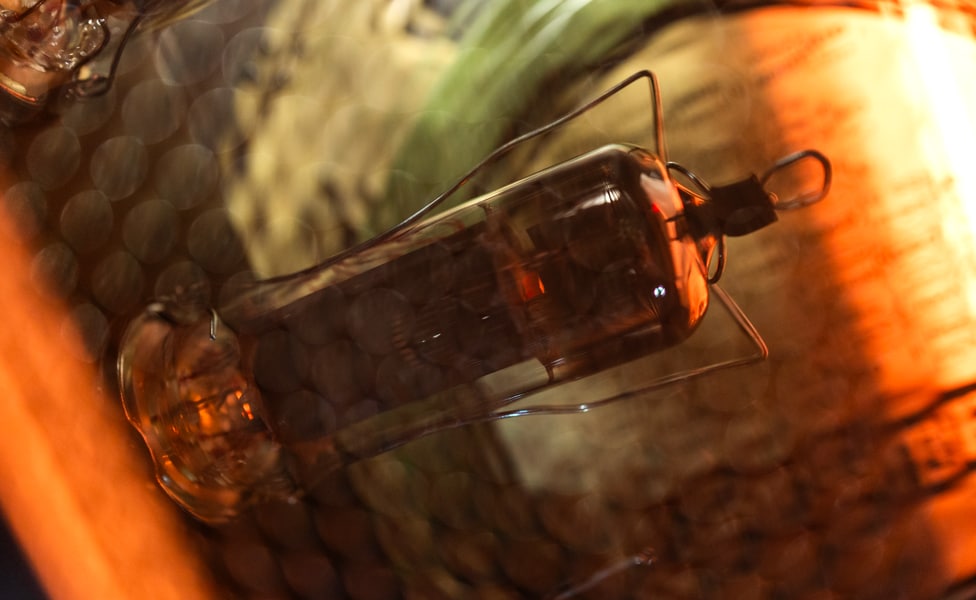
Pictured: EL84 in a VOX AC15C1
As a final note, if you’re still not sure which power tubes—and which amps—might be right for you, don’t sweat it. Just contact one of our expert Gear Advisers, and they’ll direct you to the tone tools you’re seeking.










